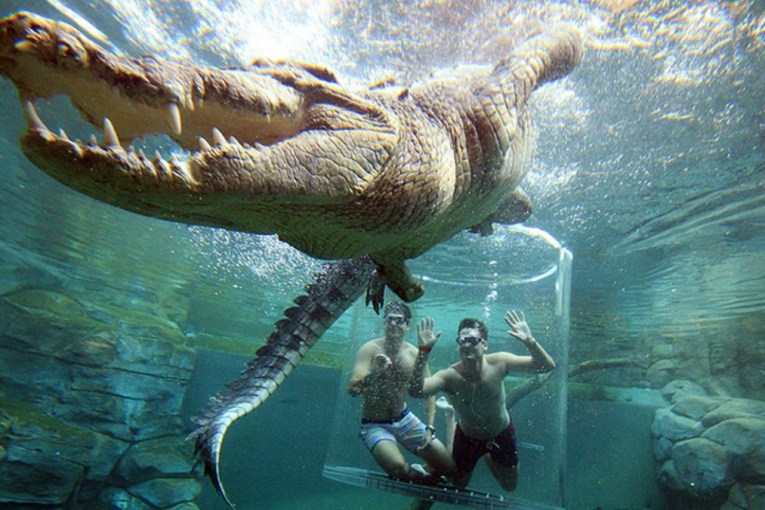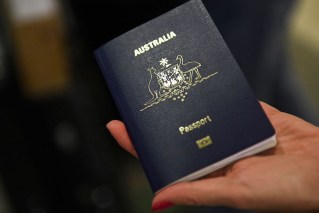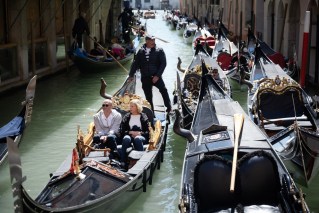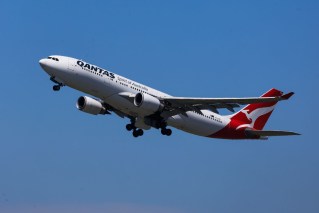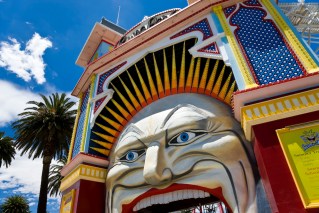Revealed: The world’s most surprising beaches

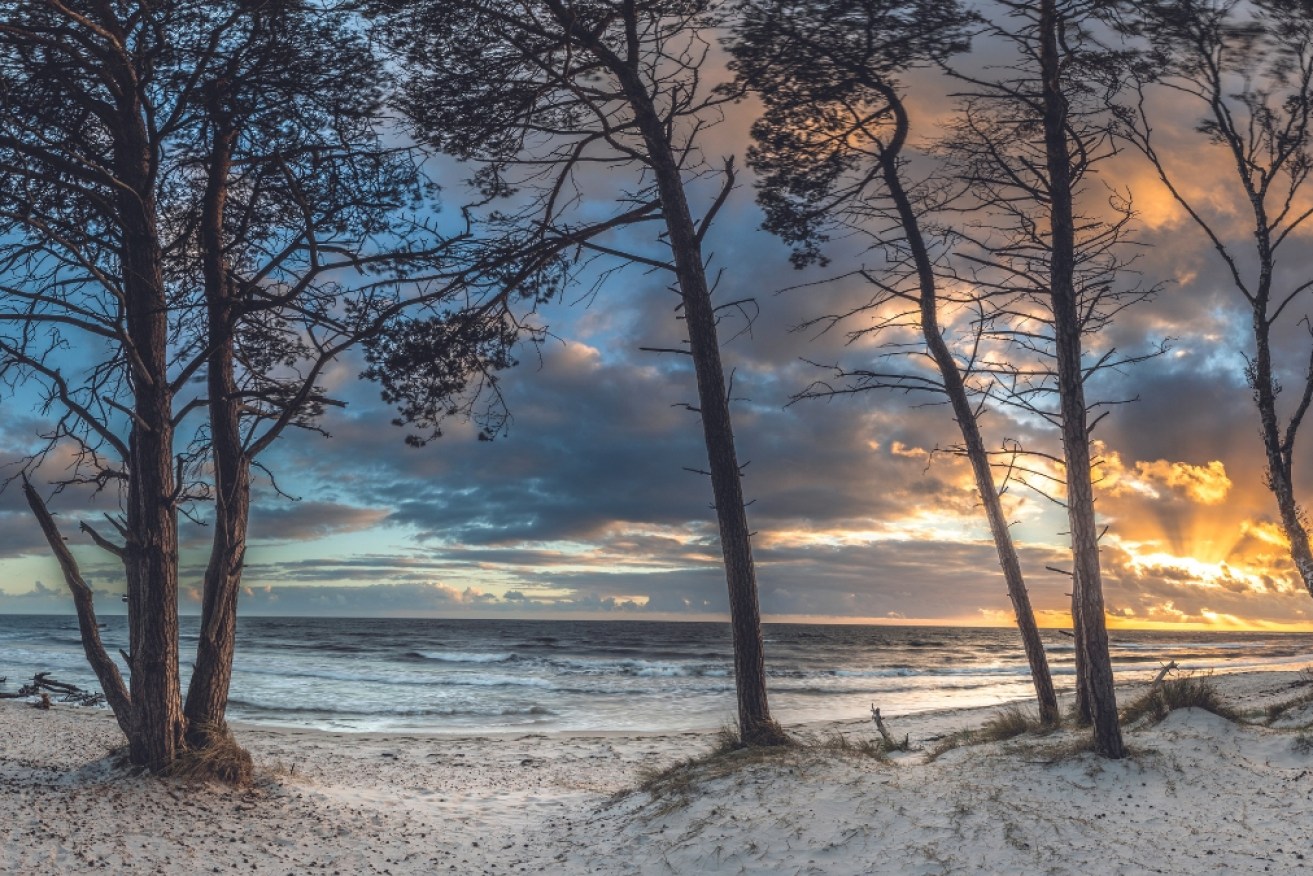
Denmark's Dueodde Beach. Photo: Lonely Planet
Whenever a rundown of top beaches is released, you can count on the Australian coastline to dominate.
Every nation has its strengths, and it’s a simple fact that, like Ken, ours is ‘beach’.
It’s not boastful, but it’s also not surprising.
Far more interesting is the concept of a beach with a USP. Instead of your cookie cutter stretch of sand, perhaps it has an unusual feature that sets it apart. Or maybe it’s tucked away in a location you wouldn’t expect.
That’s precisely what the ‘Most Unexpected’ category is all about, in Lonely Planet’s new coffee table book, Best Beaches.
It’s the list we’ve been waiting for, in an era devoted to celebrating diversity. Just don’t go hoping for any Aussie inclusions.
Dueodde, Nexø, Bornholm, Denmark
A secluded sweep of glistening, pearly-white sand dominates this protected natural space (pictured above) on the southern tip of Denmark’s sunniest island, Bornholm, which lies closer to Sweden than the Danish mainland.
Surrounded by the wild Baltic Sea, Bornholm is famous for its crisp natural light, as any visit to divine Dueodde reveals.
Low waves tinged in shades of turquoise, jade and cerulean ripple along the dune-sprinkled shoreline, which curves for miles around the edge of the island.
Sunsets here are magical, and the sprinkling of facilities are hidden well back from the sand (a campsite here, a cafe there).
Cool winter months can bring snow to the beach – it’s perfectly possible to see people tobogganing down the same sandbanks that simmered under the summer sun just a few months before. For wraparound coastal views, climb the 196 steps up Dueodde’s blue-and-white 1960s lighthouse.
Getting there
Dueodde’s main patch of beach is 10 kilometres south of Nexø, at the southern end of Bornholm, about 200 kilometres east of Copenhagen.
There are handy carparks at Fyrvejen and Skrokkegards. Bornholm airport has year-round 35-minute flights to and from Copenhagen, as well as seasonal links with Berlin, Aarhus and more. There are also regular ferry services to and from Ystad in Sweden (1¼ hours).
Qalansiyah Beach, Socotra, Yemen
Some 350 kilometres south of the Arabian Peninsula, Socotra belongs politically to Yemen but is geographically a part of Africa.
A UNESCO World Heritage site since 2008, the main island’s rugged, blistered interior shelters remarkable diversity: More than 700 of the island’s species (including one-third of Socotra’s plant species) are found nowhere else on Earth.
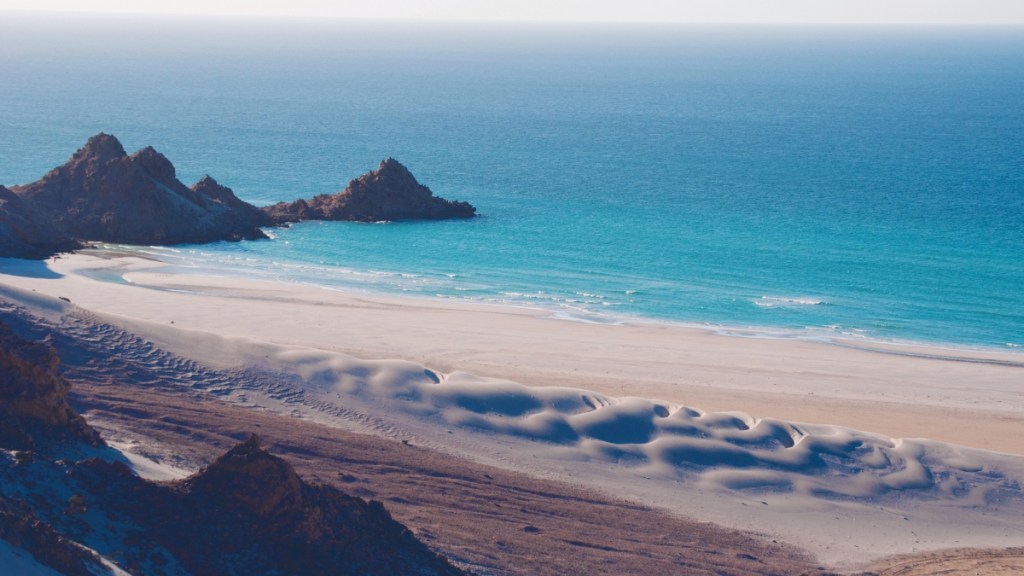
The wind-sculpted dunes of Qalansiyah Beach. Photo: Lonely Planet
Geographers consider Socotra to be one of the most isolated non-volcanic landforms on the planet, and its millions of years of isolation from other land masses is responsible for its famously biodiverse ecosystems.
Among them is the Detwah Lagoon on the island’s north-west coast, a Ramsar wetland and the only place on Socotra where the vulnerable leopard stingray and the near threatened bluespotted ribbontail ray have been recorded.
Forming a snow-white arc around this turquoise tidal inlet directly north of Qalansiyah town is Qalansiyah Beach, Socotra’s most spectacular stretch of sand.
Backed by wind-sculpted dunes and 400 metre-high sandstone and granite cliffs, this dramatic coastal landscape is also an important roosting and feeding area for waterbirds, including the endangered Egyptian vulture and the vulnerable Socotra cormorant.
Getting there
A safer and typically cheaper alternative to flying via mainland Yemen, there are weekly direct flights from Abu Dhabi to peaceful Socotra. Visas can be arranged in advance via local tour operators.
Keem Bay Beach, Keel, County Mayo, Ireland
A vertiginous yet jaw-droppingly beautiful eight-kilometre drive from Keel village, at the distant western end of County Mayo’s Achill Island, sets the scene for one of Ireland’s most glorious, secluded strands.
Sloping green hillsides spill down to a deep-set horseshoe bay, where a Blue-Flag delight of a pale-blonde beach sits framed by the Croaghaun Cliffs (Ireland’s highest sea cliffs) and the thundering moody-blue Atlantic.
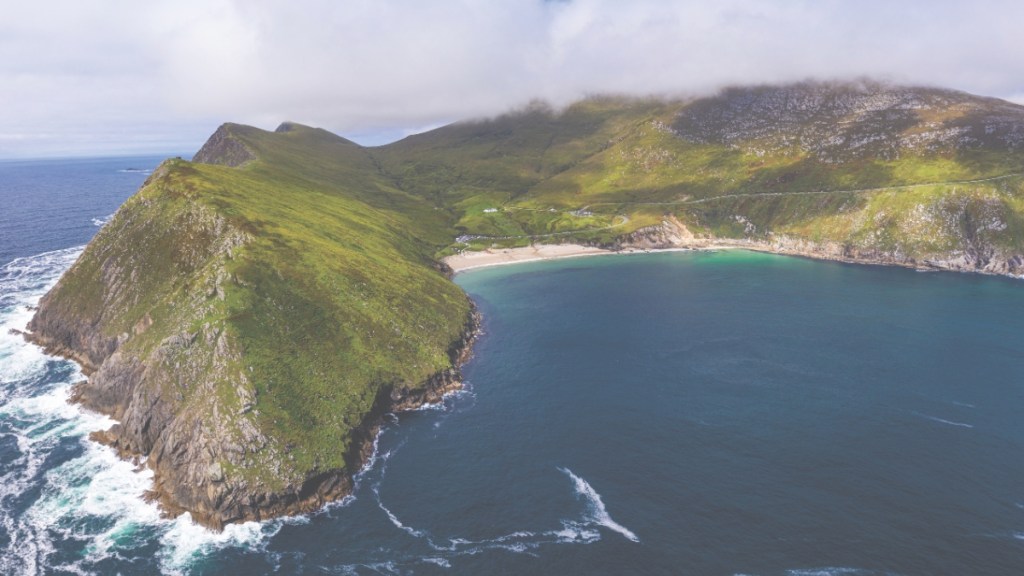
Lush green hills surround Ireland’s Keem Bay. Photo: Lonely Planet
The tucked away location means calm (if cool) waters, so swimming and snorkelling are popular.
Summer kayaking trips are a fabulous way to drink in the wild and rural scene from the water, and those with keen eyes might spot rare plankton-eating basking sharks and pods of dolphins, which sometimes swim and feed around the swirling bay.
Getting There
Keem Bay is accessible along western Achill Island’s snaking R319 road. The nearest airport is Ireland West Airport Knock, 95 kilometres east of Achill Island, or a 1½-hour drive away, with some international flights.
Fuwairit Kite Beach, Al Shamal, Qatar
The stark Qatari desert meets the crystal-blue waters of the Arabian Gulf at Fuwairit Kite Beach, the most pleasant spot for a swim on the coastline that almost entirely encircles the Arab state of Qatar.
At least outside of the kitesurfing (read: windy) season from January to June, when kiters from all over the world descend on Fuwairit to slice across its clear, shallow waters – a sight to behold from the sand.
Until very recently, this lonely stretch of coastline was completely undeveloped, save for a handful of private compounds and the crumbling remains of fishing villages, which were abandoned when Qatar’s oil and gas industries took off in the mid-20th century.
A brightly decorated Hilton-branded resort right on the beach now offers the only place to stay and eat at Fuwairit.
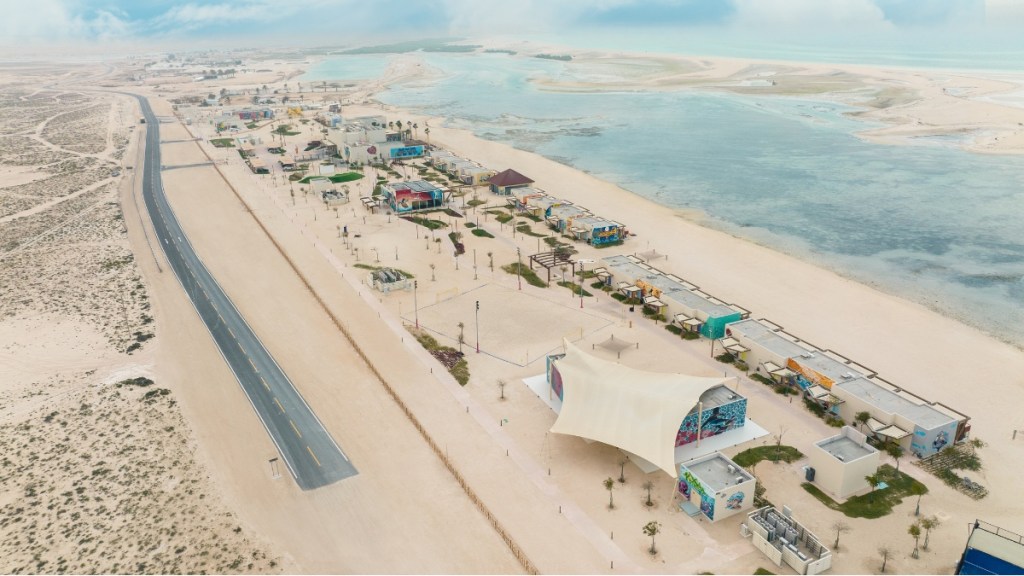
Fuwairit Kite Beach. Photo: Hilton
If you’re not using the resort facilities, you’ll need to bring everything with you for a day on the beach, including adequate sun protection and drinking water.
The months of April and October are generally the best for swimming, when it’s not too hot in or out of the water.
From May to August, the shallow sea can feel like a warm bath.
From April to July, the northern section of the beach, which forms a peninsula, is typically closed off to protect nesting hawksbill turtles.
Getting there
Fuwairit Beach is 95 kilometres or about an hour-long drive from the capital Doha. There are no direct buses, but you can catch a bus to Al Khor, just over halfway, and get a taxi from there.
Lalomanu Beach, Upolu, Samoa
Jagged black volcanic rocks meet the turquoise sea along much of Samoa’s coastline, which makes the soft sands of Lalomanu Beach at the south-eastern tip of the main island feel all the more special.
Devastated by a tsunami that struck Samoa in the early hours of September 29, 2009, Lalomanu’s colourful beach fales have since been rebuilt, offering a cheap and characterful sleeping option just steps from the sea, as well as an opportunity to support locals who have rebuilt their lives here, too.
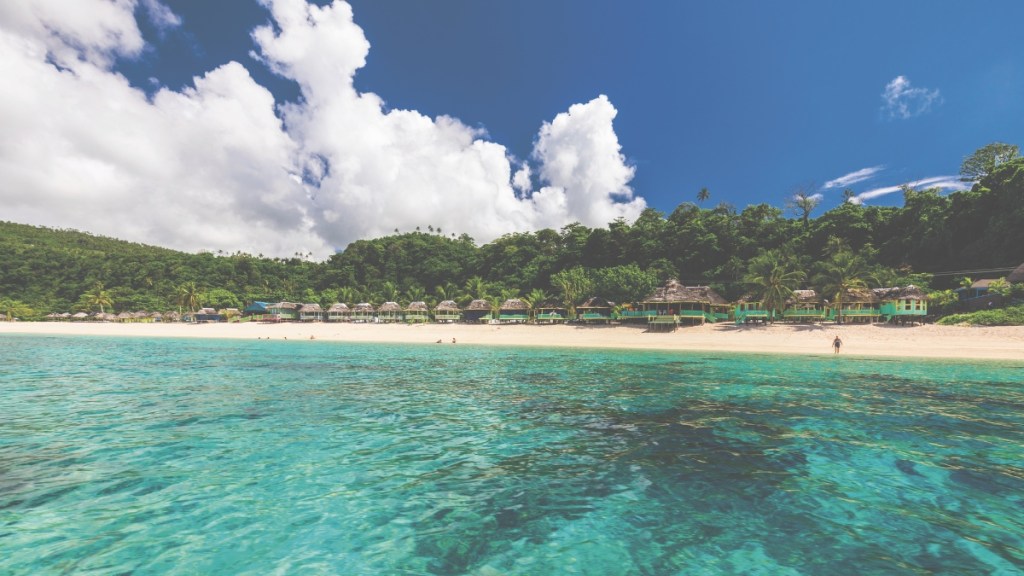
Lalomanu. Photo: Lonely Planet
With next to nothing to do here but swim and sip local Vailima beer as you gaze across the sparkling Pacific Ocean towards the uninhabited island of Nu’utele, 1.3 kilometres off the coast, it’s just about perfect for most visitors.
But if you feel like exploring, Tu Sua Ocean Trench, Samoa’s most iconic swimming hole formed by a collapsed lava tunnel, is only 13 kilometres down the road.
Getting there
Lalomanu Beach is 60 kilometres or a 90-minute drive from the capital Apia.
Car hire is available at the island’s international airport, a 50-minute drive west of Apia, but there are more options in Apia. A bus runs from Apia’s main bus station to Lalomanu Beach, but there is no set schedule.
This is an edited excerpt from Lonely Planet’s Best Beaches ($49.99).









